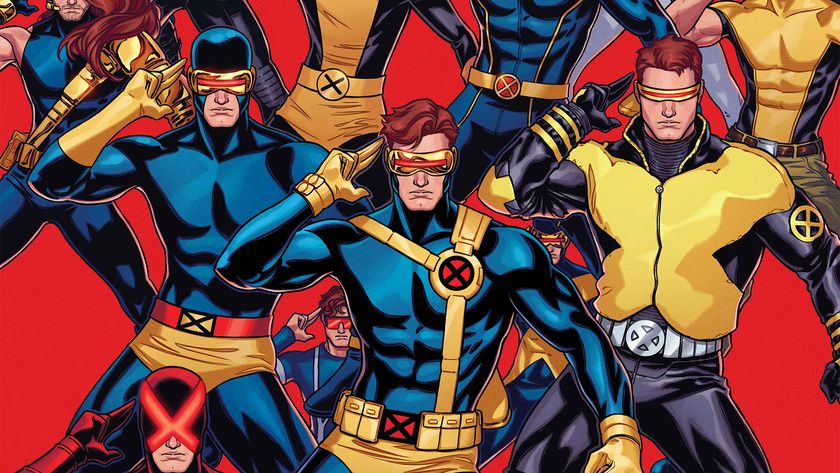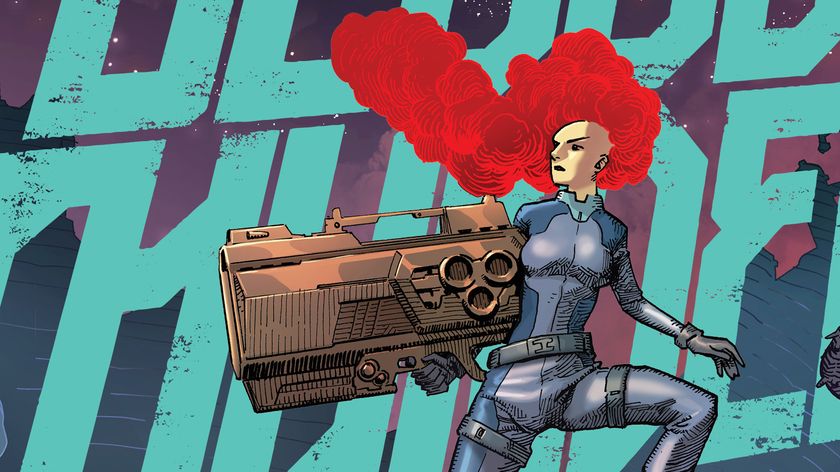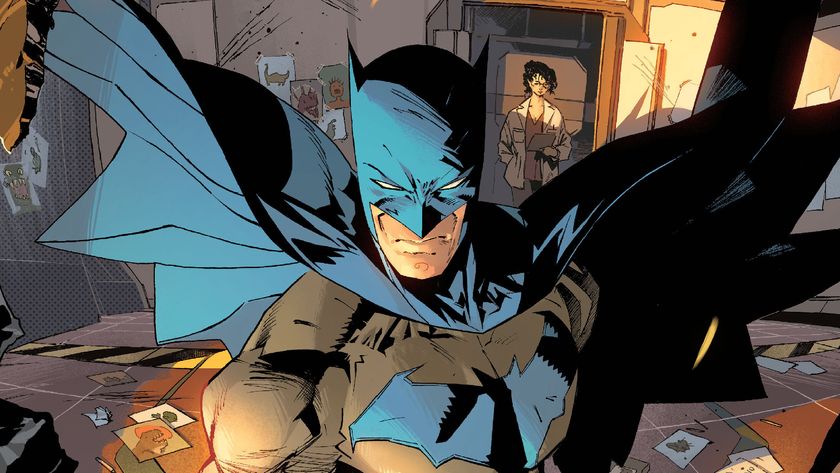Horror manga icon Junji Ito on life, death, and using reality to scare you
We chat with the Uzumaki creator Junji Ito on his brand of horror
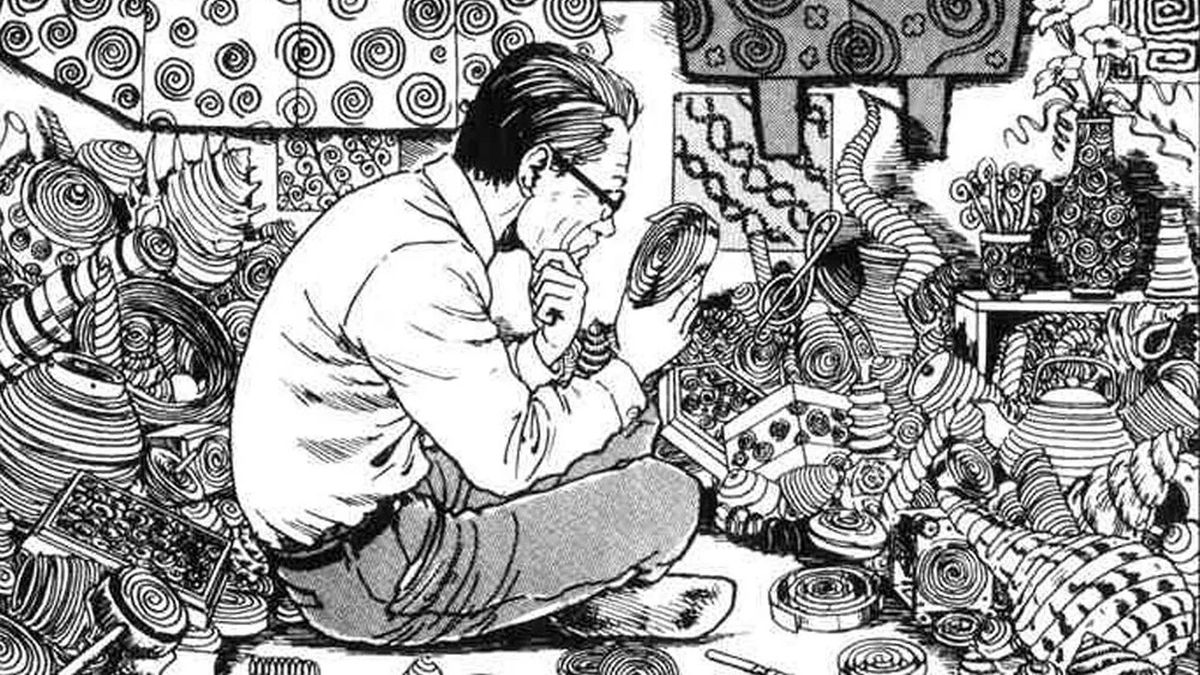
Writer/artist Junji Ito has been scaring manga readers across the globe for decades with his horror manga, but upon his first trip to North America for the Toronto Comic Art Festival he elicited a different response: joy.
Junji Ito is well-known to comics and manga fans for his iconic horror series Uzumaki, Tomie, and Gyo. To say he is manga's version of Stephen King would be an understatement - and a discount to Ito's considerable drawing ability in addition to storytelling.
Ito came to the US shortly after his adaptation/expansion of Mary Shelley's Frankenstein earned the manga-ka an Eisner Awards nomination, VIZ's translation of his short story collections Shiver and Smashed, and the impending release of No Longer Human, his manga adaptation of a prose novel by Osamu Dazai.
And with this US appearance, it was also a chance for Newsarama to interview the Japanese writer/artist - with the assistance of interpreter Jocelyne Allen.
Newsarama: Junji, VIZ is releasing your adaptation of No Longer Human. What made the original prose novel interesting to you?
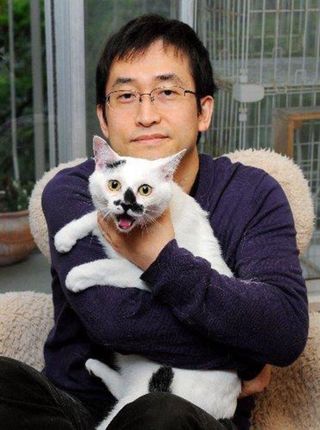
Junji Ito: No Longer Human is a story by Osamu Dazai, and the protagonist - Yozo Oba - is really quite modeled after Dazai, in a way. He's frightened of human beings, he has a phobia of people. My first kind of inclination was “That's very similar to myself.”
And in doing manga, that's also a way of expressing myself. And so, to have that character who was similar to me in that way, it really stimulated me creatively.
Comic deals, prizes and latest news
Get the best comic news, insights, opinions, analysis and more!
Newsarama: Was there anything you changed when exploring the story through your adaptation, since the novel was originally written in 1948?
Ito: Actually, no, I didn't do anything to modernize it. It's set in the exact same period as the original. So that would be the early Showa era, around 1925-ish. I actually did a lot of research on the kind of bars and nightlife of the time, what the shops look like. I looked at a lot of pictures and other things for the work.
Newsarama: You've been adapting a lot recently - No Longer Human, and before that Frankenstein. With you now in America, have you ever had thoughts on creating stories with characters from North American pop culture? Choices like Batman and Doctor Strange come to mind, or even a villain like Thanos since, in the comic books, he courted Death…
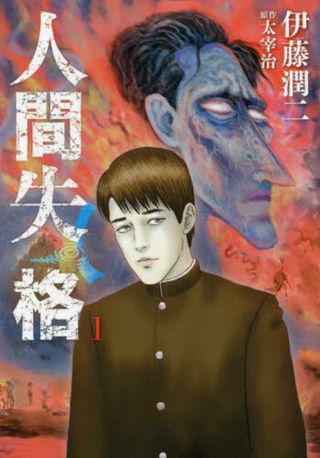
Ito: Ah, well, actually, so the truth is that - Marvel? Right, Marvel - I don't actually know that much about Marvel. I know there are movies, but I haven't really seen them.
My wife, actually, is really knowledgeable about that stuff, though. [Laughs]
But, I think I have to work on that and do some studying from now on…
Newsarama: The Oshikiri character in your Frankenstein is interesting. What was the appeal of exploring different horror situations through the POV of a recurring character?
Ito: With the Oshikiri series, it's basically alternate dimensions - this series of parallel worlds. For each episode, each Oshikiri is of a different world - there are many Oshikiris in many worlds. So it is a series that kind of has its own sci-fi elements involved in it.
The Oshikiri in 'this' world, in the real world, he's very serious, he's a very quiet boy. But in another world, he's an evil murderer. It's not so much that there's a change, that this Oshikiri became another Oshikiri, but rather 'that' Oshikiri was always like that. He was always an evil murderer. They exist independently of one another.
I hear people [authors] talk about how [when writing], 'their characters are there, and they're just moving on their own' - that does not happen for me. I'm actually really bad at making the characters 'move' and do things. So in my stories, and my way of telling stories, the characters are really just a 'tool' for me, and I don't know if that's a terrible thing to say about them. But that's the way I create stories.
Newsarama: Can it be said that the ways Oshikiri's experiences unfold reflect - if at all - to how you form some of your story concepts at-large?
Ito: Is there that commonality?
I think that my creative process is reflected in the Oshikiri series… For example, in the story 'Used Record,' I use the same process as well. You start from the everyday - that is kind of my usual way of creating a story. You have this everyday scene and it gradually becomes stranger.
If you have the supernatural or the strange world right from the get-go, it doesn't really proceed anywhere. It doesn't really move forward. But if you have that stable ground of the everyday, the familiar, and then you become progressively weirder, yes. That's the way I tend to work.
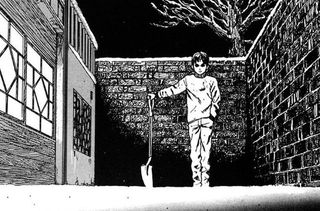
Newsarama: Is there anything in your stories that you feel gets 'missed' when they're translated - be it to TV and film, or to another language? Or perhaps, are there any changes that ended up making them just as interesting in their own right?
Ito: With the Tomie series, which wasn't with Shogakan in the beginning – that series ended up being the first movie adaptation of my work. And what I felt at the time was that, honestly, they just completely misunderstood the character when they made that movie. The character, she wasn't like the manga at all…
The thing about Tomie is that she doesn't have a human 'heart'. There's nothing human about her in that way. In the manga, she never worries or struggles or has those kinds of concerns, per se. But in the movie, she's kind of like this monster but with things she worried about. The Tomie in the movie actually confessed her love to someone, and so that felt really weird to me.
I think it really depends on the director's talents and skills. I'm sure a really excellent director can make something amazing, whether or not I had any contribution at all. The original work can be totally different from the movie and the movie can still be really interesting. It can be fun to see how the director's talents will inform that and bring out a new work.
Newsarama: Are there any past stories or concepts you've created that you'd like to revisit again someday?
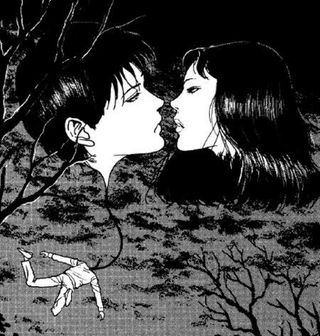
Ito: This wasn't with Shogakan, but I did this manga called Hanging Blimp, which is collected in in the English edition of Shiver. I really find that the world view and the world building in that story really interesting, the ideas that were involved in it.
It's only a 60-page story, so if I could go back and revisit that, make it into a longer work, I think that would be really fun.
Newsarama: Can you tell us anything about the next ideas you're playing with?
Ito: Right now, I'm actually meeting regularly with my editor, Kato, here. Now that No Longer Human is over, we're sort of discussing what should be my next series. Right now, we're thinking of a story with some elements of mystery. So we're gonna adapt again, an adaptation of an original work. The main character would be a detective kind of person, and there would be episodes [to the story - long-form].
I personally can't write mysteries, I don't think I have any kind of talent for that sort of thing. So we're looking for some original story to work with. And Kato is looking for that for me. And we're discussing it - probably something by the famous Japanese mystery writer Edogawa Ranpo. Maybe work on that, have the characters and then just 'move' them like that.
We're still, obviously, in the middle of thinking of all of it, but that's where we're at.
Do you like Junji Ito? You'll love our recommendations for the best horror comics of all time.
Most Popular






